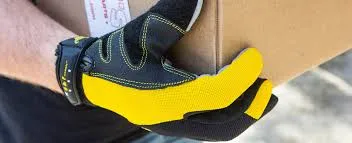hard hat safety helmet
The Importance of Hard Hat Safety Helmets A Comprehensive Overview
In many workplace environments, particularly in construction, manufacturing, and industrial sectors, safety helmets—commonly known as hard hats—are a crucial component of personal protective equipment (PPE). These helmets are specifically designed to protect workers from head injuries caused by falling objects, collisions, and other potential hazards. This article delves into the importance of hard hat safety helmets, their design and features, compliance standards, as well as the significance of proper usage and maintenance.
The Role of Hard Hats in Occupational Safety
Safety helmets serve a vital role in safeguarding workers against head injuries. According to the Occupational Safety and Health Administration (OSHA), head injuries are one of the most common types of injuries on construction sites and other high-risk environments. Hard hats significantly diminish the risk of severe injuries, such as concussions or skull fractures, which can result from accidental falls, flying debris, or the unexpected impact of machinery.
Design and Features of Hard Hats
The design of a hard hat typically includes an outer shell made from durable materials such as high-density polyethylene (HDPE) or fiberglass. This outer shell is engineered to distribute the force of an impact, protecting the skull from direct contact with hazardous objects. Inside, hard hats contain a foam padding or suspension system that enhances comfort and absorbs shock. Additionally, many modern hard hats come equipped with features such as
1. Chin Straps To ensure that the helmet stays securely on the head, especially in dynamic work environments where movement is frequent. 2. Visors and Face Shields Many hard hats offer options for additional protective gear, such as visors or face shields, to protect against debris or chemical splashes. 3. Ventilation Certain hard hats are designed with ventilation features to improve comfort in hot working conditions.
Compliance Standards
hard hat safety helmet

To ensure maximum protection, hard hats must adhere to specific safety standards set by organizations such as the American National Standards Institute (ANSI) and the International Organization for Standardization (ISO). These standards categorize hard hats into different classes based on their resistance to impact and electrical hazards.
For instance, Class E hard hats are designed to provide shock absorption and are tested for electric shock resistance up to 20,000 volts, while Class G helmets are tested for lower voltage. Employers must ensure that workers are equipped with appropriate hard hats that meet these compliance standards based on the potential hazards present on the job site.
Proper Usage and Maintenance
The effectiveness of hard hats in protecting workers is contingent not only on their design but also on proper usage and maintenance. It is essential that hard hats fit correctly to provide optimal protection. Employers should conduct regular training sessions to instruct workers on the importance of wearing hard hats at all times while on-site and how to fit them properly.
Maintenance is equally crucial. Hard hats should be inspected routinely for signs of wear and tear, such as cracks, dents, or signs of degradation from exposure to chemicals or extreme temperatures. If a hard hat has been subjected to a significant impact, it should be replaced immediately, even if no visible damage is apparent, as the protective qualities may have been compromised.
Conclusion
Hard hat safety helmets are indispensable tools for ensuring workplace safety, especially in high-risk industries. Their robust design and adherence to safety standards provide essential protection against head injuries, while proper usage and maintenance maximize their effectiveness. As we continue to advance in occupational safety practices, it is imperative for employers and employees alike to prioritize the use of hard hats and commit to creating a safe working environment. In doing so, we can significantly reduce the incidence of workplace injuries and protect the most vital asset in any organization—its people.
In conclusion, investing in quality hard hats and promoting a culture of safety is not just a regulatory requirement; it is a moral obligation to ensure that every worker returns home safely at the end of the day.
-
Top Safety Clothing with AI-Driven Protection
NewsAug.02,2025
-
Top HDPE Safety Helmets - Lightweight, Durable Head Protection
NewsAug.01,2025
-
Top AI Safety Clothing with GPT-4 Turbo | Smart Protection
NewsJul.31,2025
-
Face Shield Safety Helmet with GPT-4 Turbo AI Safety
NewsJul.31,2025
-
CE Working Clothing for Construction & Welding Safety
NewsJul.30,2025
-
Premium Safety Helmet with Visor for Construction & Industrial Use
NewsJul.29,2025
